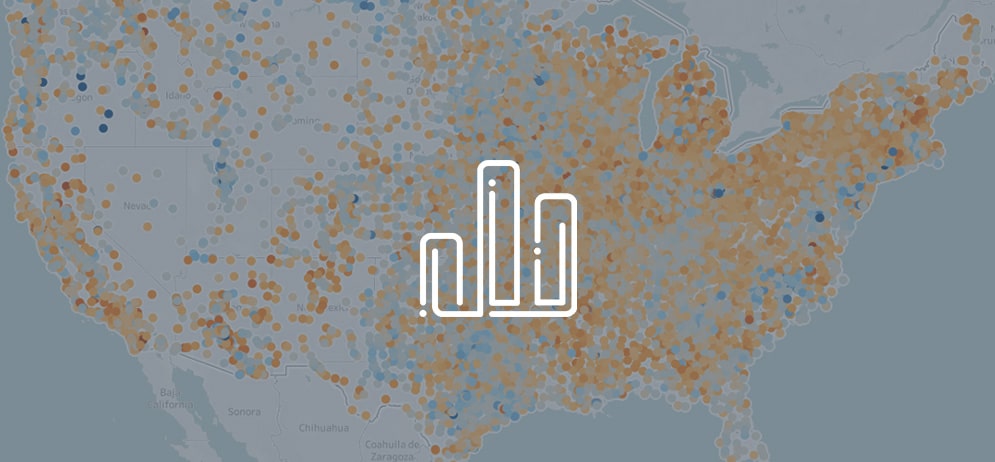Schools have had to face many new challenges in response to the coronavirus pandemic. While the vaccine rollout may signal the coming end of the pandemic – and the end of some of those challenges – there is one issue that the vaccine will not remedy: declining enrollment. As reported in places from Virginia and Georgia to Minnesota, Arizona, and others, public schools are seeing declines in enrollment that have human resource and budgetary implications. Most of these publications imply that the pandemic is to blame for these declines in enrollment. But is that really the case? Let’s take a look.
We took advantage of the exciting capabilities of 5Sight®, one of five solutions offered by Forecast5 Analytics, now a part of Frontline Education. 5Sight enables districts to leverage prebuilt datasets and built-in analytic tools to generate customized perspectives on organizational, financial, and student-related trends, as well as benchmark peer performance. 5Sight is built on a state-by-state basis using state Department of Education, National Center for Educational Statistics (NCES), and related data.
Take a look at enrollment changes at the district level for districts labeled by NCES as a “Regular Local School District” over the most recent 10-year period (2009-2019). Figure 1 shows the percent change in enrollment for each district across the county. Only districts that had data for both years have been included.
Figure 1: District Enrollment Trends: All Students
A quick glance at the map would reveal an overwhelming majority of districts have experienced a drop in enrollment. In fact, enrollment did decline nationally about 0.33%. However, a deeper dive into the data shows that enrollment trends differ greatly by location. Table 1 below breaks down enrollment trends using NCES-defined Locale categories.
Public School Districts
Enrollment declined across each district category defined as “Rural” and “Town.” The largest percent change was seen in “remote” and “distant” rural districts, where enrollment dropped more than 6%. While there was an overall decrease in districts located in cities, the decrease only occurred in large cities. “Mid-size” and “small” cities saw enrollment increases. Likewise, all three sub-categories of the “Suburb” locale saw enrollment increases. Though there was an overall enrollment drop nationally, enrollment trends differ dramatically based on the district location.
Why is public school enrollment decreasing?
It’s clear: there was a general decrease in public school enrollment over the past 10 years. But why? Aside from declining birth rates, the growth in charter schools is certainly one reason. Over the same period, if you look at districts labeled by NCES as an “Independent Charter District,” you can see that enrollment increased in these districts by 80%. Further, enrollment in each NCES Locale category saw dramatic enrollment increases. Again, only districts that had data for both years are included here.
Independent Charter Districts
Changes in enrollment numbers can have a ripple effect throughout a school district, but it’s not enough to just examine the overall enrollment number trend. Who the students are matters, too, regardless of an increase or decrease in the total. From 2009 to 2019, enrollment of students who qualify for Free or Reduced Price Lunch (FRPL) services increased by 134%. This is traditionally the most vulnerable student population and, as a result, may require more resources from the school district in the form of additional services and specific personnel.
Figure 2: District Enrollment Trends: FRPL Students
What you can do
The general discussion regarding enrollment drops may be misleading. Perhaps a better conversation to have is about how enrollment is changing. How has student enrollment changed in your district? How might this change affect hiring decisions and budget allocation?
Here are some resources to help as you seek to meet every student’s needs in your district:
- Podcast: School Workforce Diversity. Why does inclusive hiring matter in schools? What are the roadblocks for schools looking to increase the diversity of their teaching populations? A conversation about workforce diversity in education. Listen now –>
- Podcast: Grow Your Own Teachers. When leaders at this school district wanted a teacher workforce that reflected the diversity of its student body, the answer was right in front of them. Listen now –>
- What is a Whole Child Approach for Special Student Populations? Adopting a whole child approach means understanding the social, emotional, mental, physical, and academic needs of your students and finding ways to meet those needs as they evolve.
While the national data from NCES lags, 5Sight data from state departments of education is available for 2020, and in some cases for 2021, allowing you to begin to assess even more clearly the impact of the pandemic on enrollment. This includes visibility into enrollment declines and student movement between districts and between charter schools.
Are you interested in assessing district trends or benchmarking your performance — enrollment, finances, student achievement, staffing, and more — against peer districts within your state? 5Sight from Forecast5 Analytics gives you a big-picture perspective so you can make data-driven decisions more quickly and confidently. And if you’re seeking to reevaluate boundaries, reassess school capacities, or determine optimal programming locations due to enrollment shifts, check out 5Maps, a geovisual analytics tool also from Forecast5 Analytics. forecast5analytics.com
